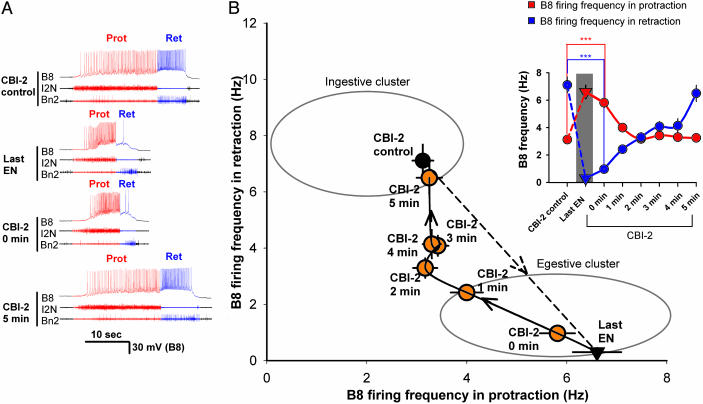Fig. 2.
History-dependent network state determines the nature of the motor program. CBI-2 was stimulated for the duration of the protraction phase (19.5 ± 1.75 s) as in Fig. 1B to elicit eight consecutive programs, then EN was stimulated as in Fig. 1B for 5 min, then CBI-2 was stimulated again every minute. (A) Representative recordings. Shown are data for a control ingestive CBI-2-elicited program (CBI-2 control), last egestive EN-elicited program (last EN), egestive program elicited by CBI-2 immediately after EN stimulation (CBI-2, 0 min); ingestive program elicited by CBI-2 5 min after EN stimulation (CBI-2, 5 min). (B) Group data (n = 13). Control CBI-2-elicited programs are in the ingestive cluster (black circle); the last EN-elicited program is in the egestive cluster (black triangle). Immediately after the EN stimulation, the first CBI-2-elicited program remains in the egestive cluster (orange circle; CBI-2, 0 min). With repeated CBI-2 stimulation, the programs gradually return to the ingestive cluster (orange circle; CBI-2, 1, 2, 3, 4, and 5 min). (Inset) Time course of the changes in the firing of B8 in the protraction and retraction phases. After EN stimulation, B8 firing increases in protraction and decreases in retraction.

